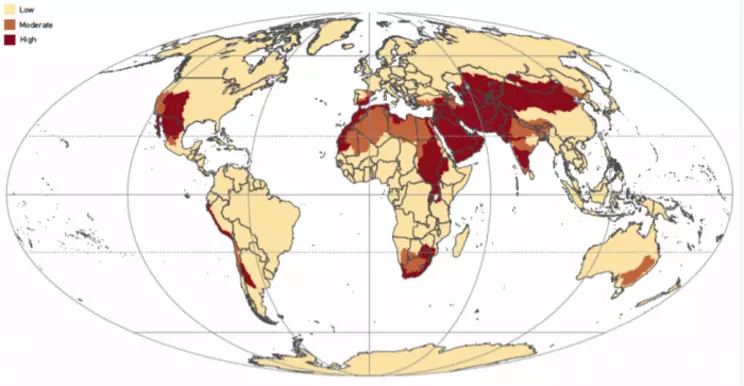For the Instructor
These student materials complement the Future of Food Instructor Materials. If you would like your students to have access to the student materials, we suggest you either point them at the Student Version which omits the framing pages with information designed for faculty (and this box). Or you can download these pages in several formats that you can include in your course website or local Learning Managment System. Learn more about using, modifying, and sharing InTeGrate teaching materials.Impacts of Surface Water Withdrawals for Irrigation
The storage and redistribution of water by dams, diversions, and canals has been a key element in the development of civilizations. Large-scale water control systems, such as on the Nile in Egypt or the Colorado River in the southwestern U.S. make it possible to support large cities and millions of hectares of agricultural land. As the population grows and water diversions increase, serious questions are being raised about the environmental costs of these large water management systems.
Agricultural water withdrawals are placing significant pressure on water resources in water scarce regions around the globe (Figure 4.2.2). If more than 20 percent of a region's renewable water resources are withdrawn, the region is in a state of water scarcity and the water resources of the region are under substantial pressure. If the withdrawal rises to 40 percent or more, then the situation is considered critical and evidence of stress on the functions of ecosystems become apparent. More than 40% of the world's rural population lives in river basins that are physically water scarce and some regions, such as parts of the Middle East, Northern Africa, and Central Asia, are already withdrawing water in excess of critical thresholds (FAO 2011).
In order to divert water from rivers, diversion structures or dams are usually constructed and create both positive and negative effects on the diverted river system. Dams can provide a multitude of benefits beyond their contribution to storage and diversion for agricultural uses. Dams can contribute to flood control, produce hydroelectric power, and create recreational opportunities on reservoirs. Negative impacts of dams and agricultural diversions include:
- Habitat fragmentation – blocks fish passage
- Reduction in streamflow downstream, which then results in changes in sediment transport, and in floodplain flooding
- Changes in water temperature downstream from dam
- Evaporation losses from reservoirs in hot, dry climates
- Dislocation of people
- Sedimentation behind dam fills in reservoirs with sediment and reduces their useful lifespan

Credit: © FAO 2011 The State of the World's Land and Water Resources for Food and Agriculture (SOLAW)


